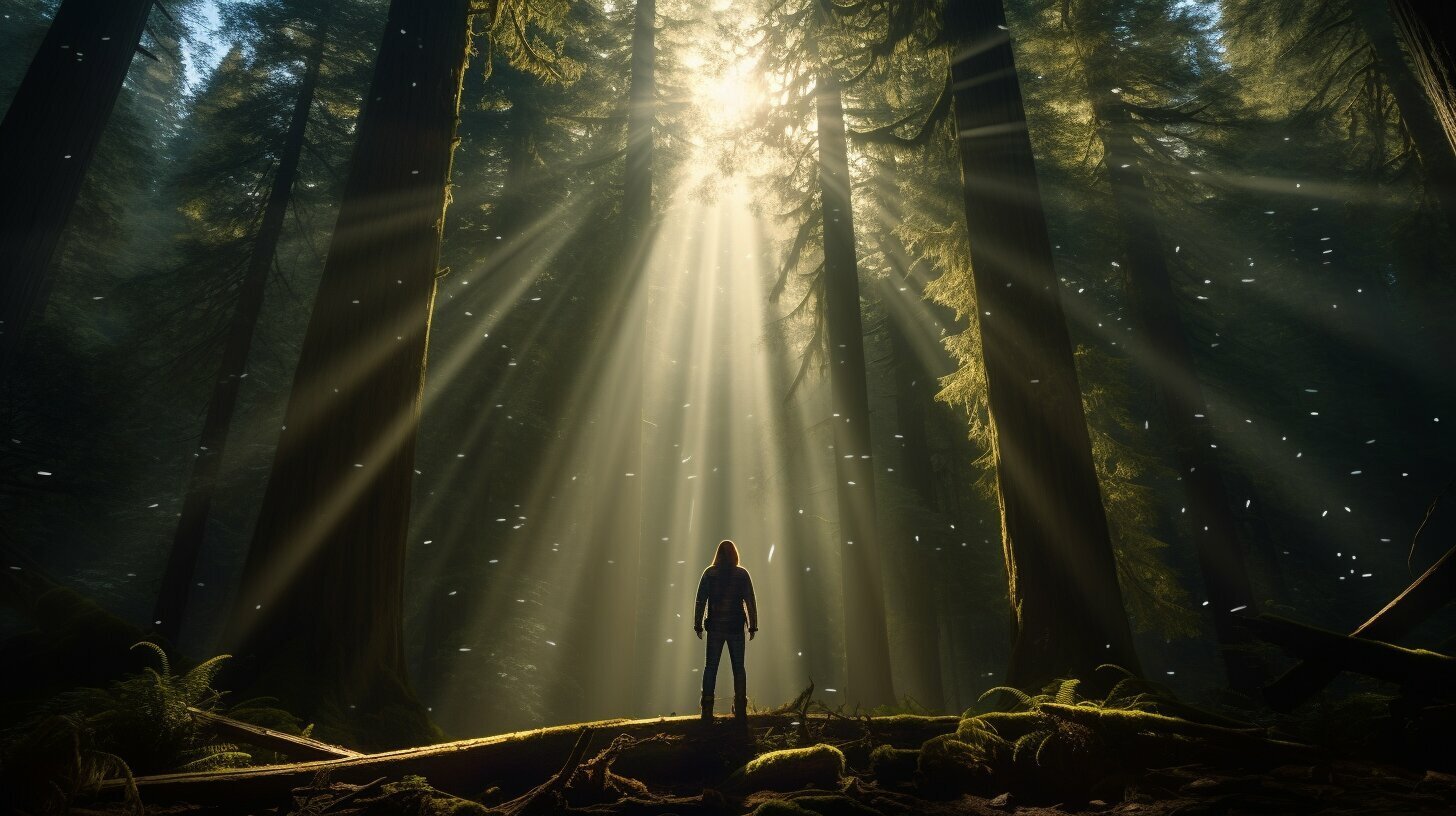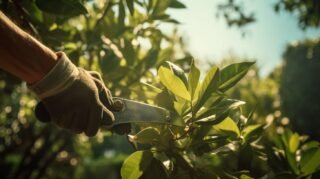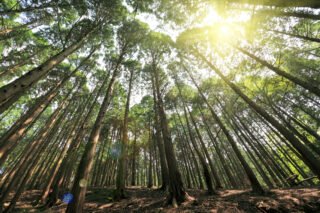Table of Contents
Cedar trees are a staple in many landscapes around the world, known for their resilience, strength, and beauty. These towering trees are a vital part of many ecosystems, providing shelter and sustenance for a variety of wildlife.
But there’s more to cedar trees than meets the eye. In this comprehensive guide, we’ll take a deep dive into all things cedar, exploring their characteristics, benefits, and even how to grow and care for them.
Key Takeaways:
- Cedar trees are known for their resilience, strength, and beauty.
- They are a vital part of many ecosystems, providing shelter and sustenance for wildlife.
- In this guide, we’ll explore cedar tree characteristics, benefits, and how to grow and care for them.
Types of Cedar Trees
Cedar trees are one of the most recognizable trees, known for their distinct branching patterns and needle-like foliage. While there are many species of cedar trees, the most common types include the Eastern Red Cedar, the Western Red Cedar, and the Atlantic White Cedar.
The Eastern Red Cedar, also known as the Juniperus virginiana, is native to North America and is often used in landscaping due to its tolerance for drought, poor soil conditions, and ability to resist pests. This type of cedar tree is also known for its fragrant wood and astringent berries that are used in traditional medicines.
The Western Red Cedar, or Thuja plicata, is a large evergreen tree native to the Pacific Northwest of North America. It is valued for its rot-resistant wood, which is often used for outdoor furniture, decking, and siding. Additionally, the Western Red Cedar is believed to have spiritual significance to indigenous cultures in the region.
Cedar Tree Identification
Identifying cedar trees can be done through careful observation of their physical characteristics. Cedar trees typically have scaly, needle-like leaves that grow in a spiral pattern along the branches. They also tend to have a conical or pyramidal shape, with a straight trunk and a broad base.
The Eastern Red Cedar has blue-green foliage that turns bronze in the winter. Its bark is reddish-brown and shreds in thin strips. The Western Red Cedar has scale-like leaves that are yellow-green, turning dark green in the summer. Its bark is reddish-brown and fibrous.
The Atlantic White Cedar, or Chamaecyparis thyoides, is a slow-growing tree that is native to the Eastern United States. It has soft, scale-like leaves that are green on top and blue-white underneath. Its bark is brown and fibrous, peeling in long strips.
Identifying cedar trees can be a fun and rewarding activity, especially when you learn about the unique properties and uses of each species.
Benefits of Cedar Trees
Aside from their aesthetic appeal, cedar trees offer numerous benefits both culturally and practically. Here are some of the most notable benefits and uses of cedar trees:
- Aromatic properties: Cedar trees are known for their pleasing scent, which is used in various products, such as perfumes, soaps, and candles. Their essential oils are also believed to have therapeutic properties, aiding in relaxation and stress relief.
- Building material: Cedar wood is valued for its durability, resistance to decay, and insect-repelling properties. It is commonly used in outdoor furniture, siding, and roofing.
- Traditional medicine: Cedar leaves and bark have been used in traditional medicine to treat a variety of ailments, such as respiratory issues, skin conditions, and arthritis.
- Cultural significance: Cedar trees hold great importance in Native American culture, where they are considered sacred and used in various ceremonies and rituals. They are also associated with protection and purification.
- Wildlife habitat: Cedar trees provide shelter and food for various wildlife species, such as deer, squirrels, and birds. They also help prevent soil erosion and maintain biodiversity.
Overall, cedar trees are a versatile and valuable resource, providing both practical and cultural benefits.
Cedar Tree Conservation
Cedar trees are some of the most iconic trees in the world, revered for their beauty and cultural significance. Unfortunately, cedar trees are also at risk of extinction due to various factors, including deforestation, pests, and disease.
Conservation efforts are necessary to ensure the survival of cedar trees for future generations. Here are a few ways individuals can contribute to the conservation of cedar trees:
- Plant Cedar Trees: Individuals can plant cedar trees on their property or in public spaces to increase their population.
- Avoid Cedar Wood Products: To reduce the demand for cedar wood, individuals can choose alternative wood products or cedar wood harvested from sustainable sources.
- Support Conservation Organizations: Donating to organizations that focus on cedar tree conservation and habitat restoration is an effective way to support their preservation.
- Spread Awareness: Sharing information about the importance of cedar trees and their conservation can help raise awareness and encourage action.
If you’re looking to grow cedar trees, it’s important to understand their care requirements to ensure a successful outcome. Here are a few tips on how to grow cedar trees:
- Choose the Right Location: Cedar trees grow best in well-drained soil and full sun. Choose a location that receives at least six hours of direct sunlight each day.
- Plant at the Right Time: Plant cedar trees in the spring or fall, when the soil is moist and temperatures are moderate.
- Provide Adequate Water: Cedar trees require regular watering, especially during their first year of growth. Water deeply once a week, ensuring the soil is moist but not waterlogged.
- Apply Fertilizer Sparingly: Cedar trees don’t require heavy fertilizer applications. Apply a slow-release fertilizer once a year, according to manufacturer instructions.
- Prune Regularly: Cedar trees benefit from regular pruning to remove dead or damaged branches and promote healthy growth.
By following these care tips and taking steps to support cedar tree conservation, individuals can play an important role in preserving these magnificent trees for future generations.
Cedar Tree Diseases
Cedar trees are generally hardy and resistant to many diseases, but like all living things, they can fall victim to various ailments. It is essential to identify and address diseases as quickly as possible to prevent their spread and preserve the health of the tree. Here are some of the most common cedar tree diseases to be aware of:
| Disease | Symptoms | Prevention/Treatment |
|---|---|---|
| Cedar Apple Rust | Yellow spots on leaves, brown spots on fruit, orange or brown stalks on leaves and fruit, may also affect nearby apple trees. | Remove galls (the knob-like growths on the tree) before they can release spores, prune affected branches, use fungicides. |
| Cedar Quince Rust | Similar to Cedar Apple Rust, but may also cause damage to quince, serviceberry, and hawthorn trees. | Remove galls, prune affected branches, use fungicides. |
| Cedar Leaf Blight | Brown spots on leaves, which may turn yellow and fall off prematurely. | Remove infected leaves, prune affected branches, use fungicides. |
| Cytospora Canker | Dead or dying branches, oozing sap, sunken bark, small black dots on bark. | Prune affected branches, avoid injuring the tree, maintain proper irrigation and fertilization. |
| Phomopsis Blight | Brown or black spots on needles, which may turn yellow and fall off prematurely, may also affect nearby juniper trees. | Prune affected branches, use fungicides. |
In addition to these diseases, cedar trees may also be vulnerable to pests such as spider mites, bark beetles, and cedar-apple maggots. It is crucial to monitor the tree closely for signs of infestation and take action promptly.
Healthy cedar trees are generally more resistant to diseases, so proper care is essential. Regular watering, fertilization, and pruning can help keep the tree strong and healthy. When pruning, be sure to use sterilized tools to prevent the spread of disease.
Overall, being aware of potential cedar tree diseases and taking proactive measures to prevent and address them can help ensure the long-term health and beauty of these magnificent trees.
Cedar Tree Conservation
Cedar trees have played a vital role in various cultures, and their conservation is essential to ensure their continued existence. Unfortunately, cedar trees face several threats that endanger their populations.
Threats to Cedar Trees
One of the primary threats to cedar trees is habitat destruction due to human activities such as logging and urbanization. Additionally, climate change and disease epidemics pose a significant danger to these trees.
Conservation Efforts
Many organizations are working to conserve cedar trees and their habitats. The International Union for Conservation of Nature (IUCN) has listed several cedar species as endangered, prompting conservation efforts worldwide.
The Cedar Network is a global organization that focuses solely on cedar conservation. The group conducts research, raises awareness, and works on conservation projects to protect these trees.
How You Can Help
Individuals can contribute to the conservation of cedar trees by supporting organizations dedicated to their protection. Additionally, you can plant cedar trees in your backyard or local parks to help increase their numbers.
By taking steps to protect cedar trees, we can ensure that these majestic trees continue to thrive for generations to come.
FAQ
Q: What are cedar trees?
A: Cedar trees are a type of coniferous tree belonging to the genus Cedrus. They are known for their distinctive aromatic wood and needle-like leaves.
Q: How many types of cedar trees are there?
A: There are four main types of cedar trees: the Atlas cedar, the Deodar cedar, the Cyprus cedar, and the Lebanon cedar. Each type has its own unique characteristics and geographical distribution.
Q: What are the benefits of cedar trees?
A: Cedar trees offer a range of benefits. They are often used for their durable wood in construction, furniture, and craft-making. Their essential oils have insect-repellent properties, and their presence can enhance the aesthetics of landscapes.
Q: How do I grow cedar trees?
A: Growing cedar trees requires careful planning and maintenance. They prefer well-drained soil and full sun exposure. Planting young cedar saplings is recommended, and regular watering and pruning are essential for their healthy growth.
Q: What are common diseases that affect cedar trees?
A: Cedar trees can be susceptible to various diseases, such as cedar apple rust, cedar needle blight, and cedar rust. These diseases can cause leaf discoloration, defoliation, and overall decline of the tree if not properly addressed.
Q: Why is cedar tree conservation important?
A: Cedar trees play a crucial role in ecosystems, providing habitat for wildlife, preventing soil erosion, and contributing to air quality. Conservation efforts are essential to preserve their biodiversity and cultural significance for future generations.







